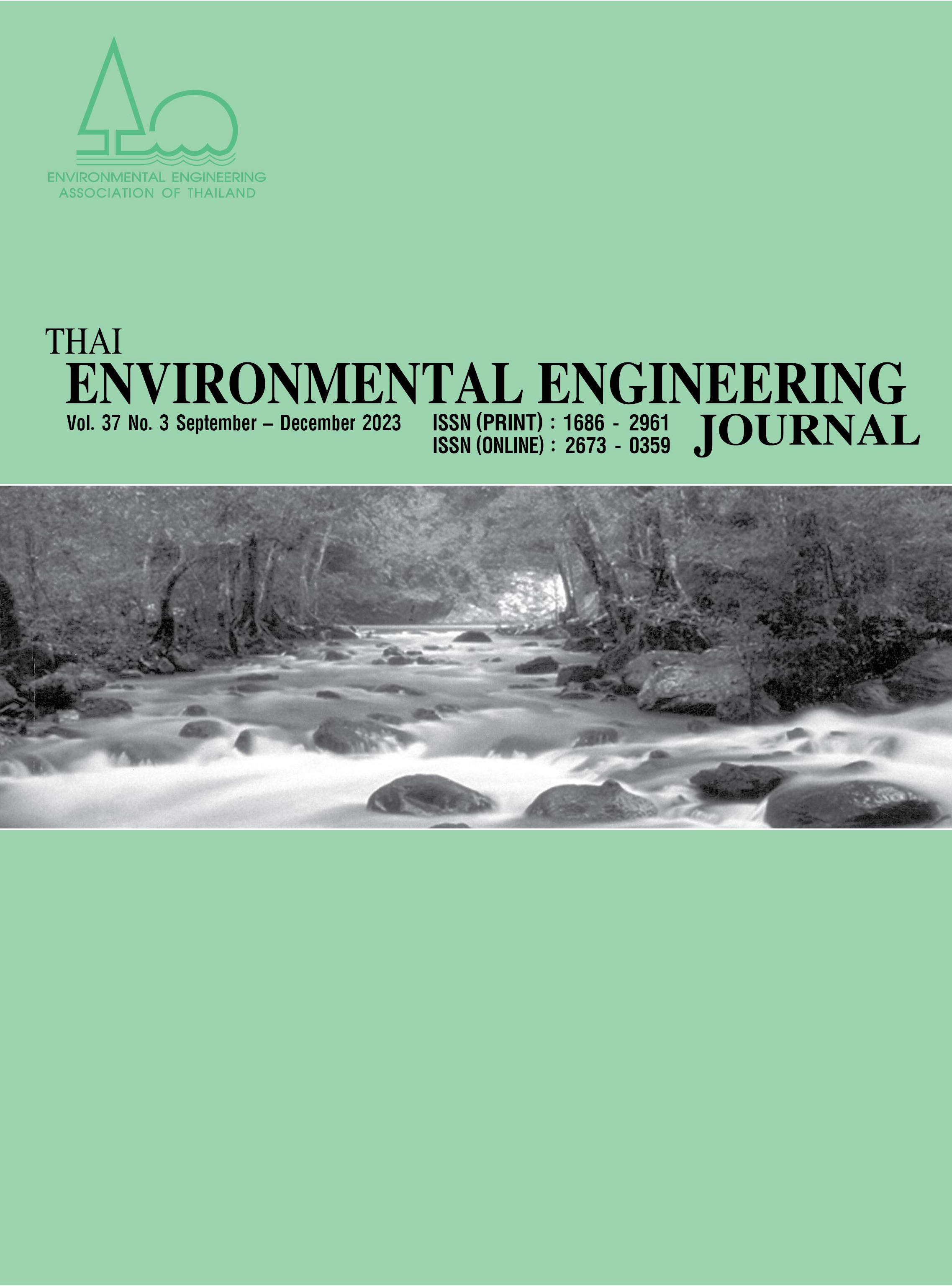Performance of Centralized Wastewater Treatment System in Thimphu, Bhutan
Main Article Content
Abstract
The main objective of this research was to provide an evaluation of the performance of the Sequential Batch Reactor (SBR) employed in the centralized wastewater treatment system of Babesa, Thimphu, the capital city of Bhutan. The performance was analyzed based on the respective plant’s flow capacity, pH of effluent, and removal of Total Suspended Solids (TSS), Biochemical Oxygen Demand (BOD), Chemical Oxygen Demand (COD), and Fecal Coliform (FC), using Standard Method of Examination of Wastewater, APHA, as well as the capital cost and sustainability of the treatment system. Removal efficiencies of the SBR for TSS, COD, and BOD ranged from 93-97±1.131, 67-84±4.791, and 65-89±6.662, respectively. In addition, the SBR effluent samples analyzed from April 2022 to August 2022 revealed a consistent and successful removal of TSS, BOD, COD, and FC with the effluent meeting the industrial effluent discharge standards set by the National Environment Commission (NEC). Not only was SBR found to be feasible economically and capacity-wise, but the success of the technology was a function of its compatibility with Thimphu’s specific characteristics. The conclusion of this study hopes to encourage a more rigorous consideration of treatment options to invest in Bhutan’s growing urban cities in the future, as well as a redefinition in how we evaluate the success of wastewater treatment systems.
Article Details
References
Phuntsho, S. 2016. Performance of Waste Stabilization Ponds: Experience from Cold Climatic Conditions of Bhutan. Journal of Water Sustainability. 6(1): 3-14.
Charlton, J. 1997. Application of waste stabilisation ponds in Bhutan — lessons within a sustainable development context. Water Science and Technology. 35(9): 199-208. DOI:10.1016/S0273-1223(97)00198-4
TA7630 BHU. 2003. Urban Infrastructure Project Report on the Urban Infrastructure Project. From https://www.adb.org/sites/default/files/project-documents//pcr-van-23616.pdf. (accessed June 2022).
Lhaden, Y. 2022. Babesa Sewage Treatment Plant Operational. Kuensel. from https://kuenselonline.com/babesa-sewage-treatment-plant-operational/ (accessed June 2022).
APHA. 2005. Standard Methods for the Examination of Water and Wastewater. 21st Edition. American Public Health Association/American Water Works Association/Water Environment Federation, Washington DC.
National Environmental Commission. 2020. Environment Standards 2020. from http://www.nec.gov.bt/publications/environment-standards. (accessed June 2022).
Kochanek, A., Przydatek, G., Pohrebennyk, V., Petrushka, I. and Korostynska, O. 2016. Evaluation of Efficiency Wastewater Treatment in the Mountain Area (POLAND). International Multidisciplinary Scientific GeoConference Surveying Geology and Mining Ecology Management (SGEM), Vienna, Austria: 121-128.
Wilk, B. K. and Cimochowicz-Rybicka, M. 2018. Biovac® wastewater treatment plants in the Mountain National Parks. Technical Transactions 1/2018 Environmental Engineering: 113-123. DOI: 10.4467/2353737XCT.18.009.7960
Bachi, O. E., Halilat, M. T., Bissati, S., Al-Ansari, N., Saggai, S., Kouadri, S. and Najm, H. M. 2022. Wastewater Treatment Performance of Aerated Lagoons, Activated Sludge, and Constructed Wetlands under an Arid Algerian Climate. Sustainability. 14, 16503: 1-17. https://doi.org/10.3390/su142416503
Parr, J. and Horan, N.J. 1994. Process Selection for Sustainable Wastewater Management in Industrializing Countries. Research Monographs in Tropical Public Health Engineering. 2. University of Leeds, Department of Civil Engineering. Leads, UK.


